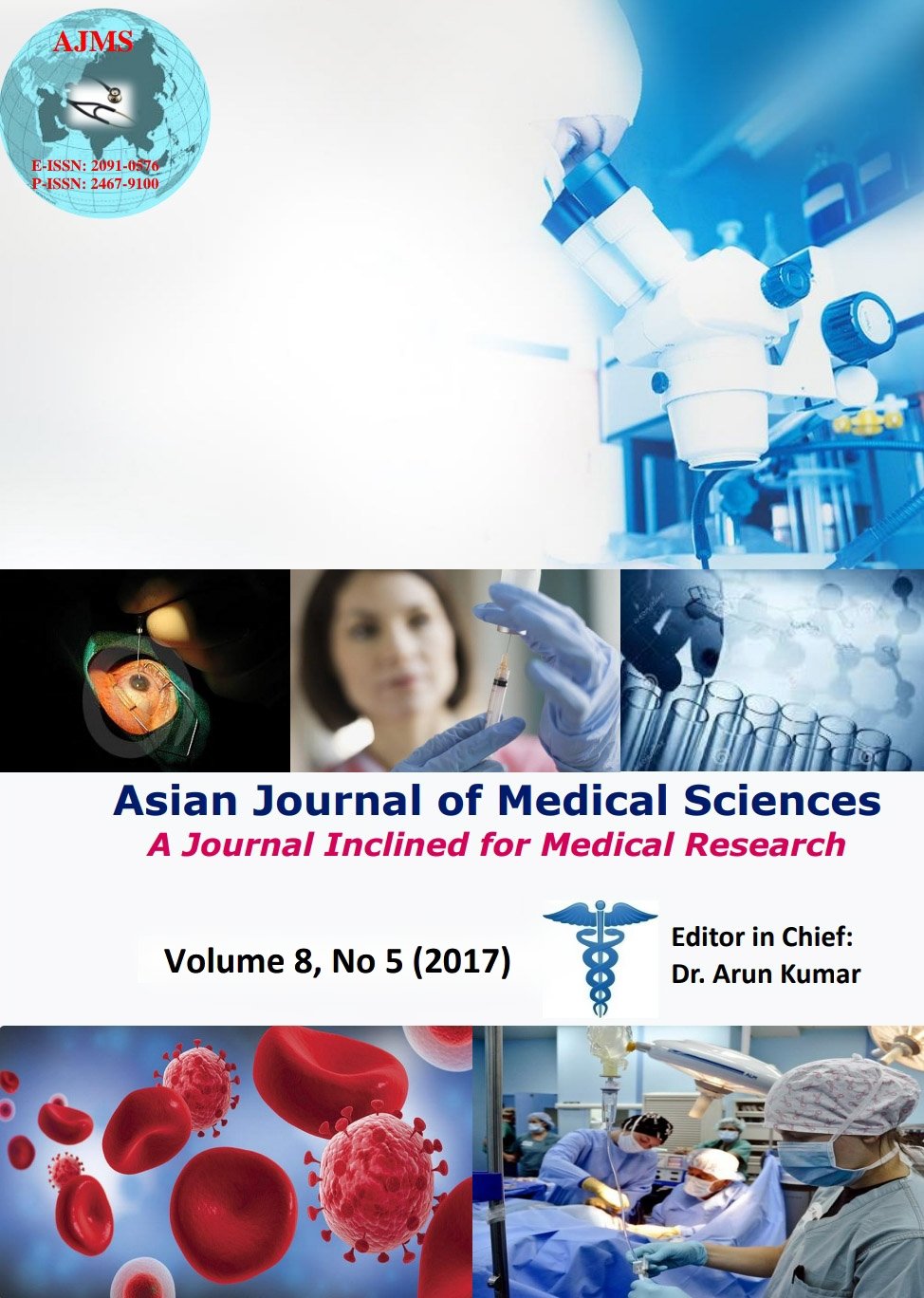An assessment of surgical outcome with the influencing factors of horizontal strabismus surgery
Keywords:
Strabismus, Strabismus surgery, Binocular visionAbstract
Background: Influencing factors of conventional horizontal surgery for surgical outcome has not been assessed in Nepal. Aims and Objective: To assess the pre-operative factors that influences the surgical outcome of horizontal strabismus surgery.
Materials and Methods: The medical records of 68 patients who underwent their first horizontal strabismus surgery at Lumbini Eye Institute from 1st January to 30th December 2015 were retrospectively reviewed. The collected clinical data included diagnosis, age group, visual acuity, binocular function, extraocular motility and pre and postoperative deviation. The success of surgery was defined by eye deviation less than 10 prism diopters (PD) at 6 weeks after operation. The influencing factors for surgical success (diagnosis, age group, visual acuity, binocular function, and angle deviations) were analyzed using chi square test and Mann-Whitney - U test, where ever appropriate.
Results: Out of 113 patients who underwent strabismus surgery during the year, 68 patients were enrolled in the study. Majority of the patients (27, 39.7%) were >9 years of age and 52.9% were female. Thirty seven patients (54.4%) were esotropic whereas, 31 were exotropic. Preoperatively, angle of deviation ranged from 20 to 90 PD with binocular vision present in 57.4% cases. Overall, success was seen in 26 patients (38.2%). Pre-operative angle of deviation and binocular vision had statistical significance with surgical success (p = 0.012 and 0.026 respectively).
Conclusion: Larger angle of deviation and poor binocular vision at presentation has higher failure rate for horizontal strabismus surgery.
Asian Journal of Medical Sciences Vol.8(5) 2017 54-57
Downloads
Downloads
Additional Files
Published
How to Cite
Issue
Section
License
Authors who publish with this journal agree to the following terms:
- The journal holds copyright and publishes the work under a Creative Commons CC-BY-NC license that permits use, distribution and reprduction in any medium, provided the original work is properly cited and is not used for commercial purposes. The journal should be recognised as the original publisher of this work.
- Authors are able to enter into separate, additional contractual arrangements for the non-exclusive distribution of the journal's published version of the work (e.g., post it to an institutional repository or publish it in a book), with an acknowledgement of its initial publication in this journal.
- Authors are permitted and encouraged to post their work online (e.g., in institutional repositories or on their website) prior to and during the submission process, as it can lead to productive exchanges, as well as earlier and greater citation of published work (See The Effect of Open Access).




